Related Research Articles
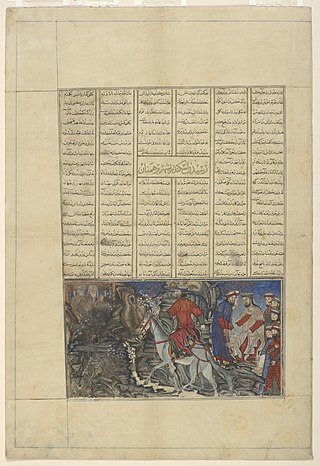
Gymnosophists is the name given by the Greeks to certain ancient Indian philosophers who pursued asceticism to the point of regarding food and clothing as detrimental to purity of thought. They were noted to have been vegetarian by several Greek authors. There were also gymnosophists in Upper Egypt who were called Ethiopian Gymnosophists by Apollonius of Tyana.

Kumbh Mela or Kumbha Mela is a major pilgrimage and festival in Hinduism. On 4 February 2019, Kumbh Mela witnessed the largest peaceful public gathering of humans ever recorded. It is celebrated in a cycle of approximately 12 years, to celebrate every revolution Brihaspati (Jupiter) completes. Kumbh is mainly held at four riverside pilgrimage sites, namely: Prayagraj, Haridwar (Ganges), Nashik (Godavari), and Ujjain (Shipra); But now the Kumbh Mela has been revived at a fifth place too. The other rejuvenated Kumbh Mela is celebrated at Bansberia Tribeni Sangam in West Bengal at the confluence of Hooghly and Saraswati river, dates back thousands of years but was stopped 700 years ago, but this Kumbh Mela has been reopened since 2022.

Sadhu, also spelled saddhu, is a religious ascetic, mendicant or any holy person in Hinduism and Jainism who has renounced the worldly life. They are sometimes alternatively referred to as yogi, sannyasi or vairagi.

The Daśanāmi Sampradaya, also known as the Order of Swamis, is a Hindu monastic tradition of "single-staff renunciation" Ēkadandis were already known during what is sometimes referred to as "Golden Age of Hinduism". According to hagiographies composed in the 14th-17th century, the Daśanāmi Sampradaya was established by Vedic scholar and teacher Adi Shankaracharya, organizing a section of the Ekadandi monks under an umbrella grouping of ten names and the four cardinal mathas of the Advaita Vedanta tradition. However, the association of the Dasanāmis with the Shankara maṭhas remained nominal.
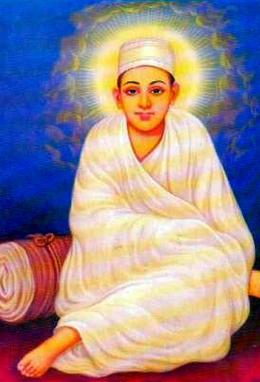
Dadu Dayal was a poet-saint religious reformer who spoke against formalism and priestcraft and was active in Rajasthan.

Akhara or Akhada is an Indian word for a place of practice with facilities for boarding, lodging and training, both in the context of Indian martial artists or a sampradaya monastery for religious renunciates in Guru–shishya tradition. For example, in the context of the Dashanami Sampradaya sect, the word denotes both martial arts and religious monastic aspects of the trident-wielding martial regiment of the renouncing sadhus.

Yatra, in Indian-origin religions, Hinduism, Buddhism, Jainism and Sikhism, generally means a pilgrimage to holy places such as confluences of sacred rivers, sacred mountains, places associated with Hindu epics such as the Mahabharata and Ramayana, and other sacred pilgrimage sites. Visiting a sacred place is believed by the pilgrim to purify the self and bring one closer to the divine. The journey itself is as important as the destination, and the hardships of travel serve as an act of devotion in themselves.
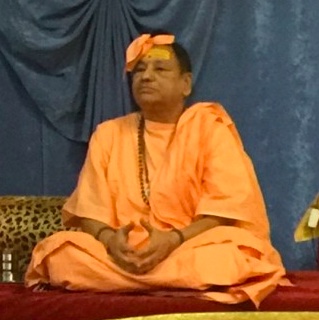
Swami Shri Mahamandaleshwar Santosh Puri Gita Bharatiji, is a guru who was born in Delhi, India in 1944. She was the disciple of Shri 108 Mahamandaleshwar Swami Shri Hariharanand Ji Maharaj since the age of three. She showed remarkable talents at a young age, delivering discourses on the Bhagavad Gita at the age of seven years. It was because of her impressive sermons on the holy Gita that she was dubbed 'Gita Bharati' at the age of 10 years by Rajendra Prasad, who was then the President of India. At the age of 14 years, she took Sannyas Diksha and was termed as Mahamandaleshwar at 18 years of age.
The Akhil Bharatiya Akhara ParishadABAP, one of the organizations of Hindu sants (saints) and sadhus (ascetics) in India. The ABAP is composed of 14 akharas, or organisations of Hindu sants and sadhus. Nirmohi Akhara and Shri Dattatreya Akhara are two of the prominent akharas which are part of it.

Swami Vishwadevanand Puri was a Hindu monk and a traditional teacher of Advaita Vedanta. He founded the Vishwakalyan Foundation Trust in Haridwar.
Mahanirvani Akhara or Shri Panchayati Akhada Mahanirvani is a Shaivite shastradhari Akhada. It is one of the three major shastradhari akhadas in Hindu tradition.

Peshwai Procession is a royal procession of the Naga Sadhus during Kumbh Mela. The Peshwai marks the arrival of the members of an akhara or sect of sadhus at the Kumbh Mela. The procession pomp and ceremony with elephants, and horses. During the procession, sadhus perform acrobatic skills and breathtaking display of their martial skills with the help of swords.

Haridwar Kumbh Mela is a mela, associated with Hinduism and held in the city of Haridwar, India held every 12 years. The exact date is determined according to Hindu astrology: the Mela is held when Jupiter is in Aquarius and the Sun enters Aries. The event possesses deep religious significance to Hindus as well as other spiritual seekers. Historically, it was an important commercial event and was attended by merchants from as far as Arabia.
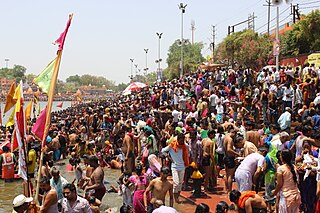
Ujjain Simhastha is a Hindu religious mela held every 12 years in the Ujjain city of Madhya Pradesh, India. The name is also transliterated as Sinhastha or Singhastha. In Hindi, the fair is also called Simhasth or Sinhasth. The name derives from the fact that it is held when the Jupiter is in Leo.

Nashik-Trimbakeshwar Simhastha is a Hindu religious mela held every 12 years in the Nashik district of Maharashtra, India. The name of the festival is also transliterated as Sinhastha or Singhastha. It is one of the four fairs traditionally recognized as Kumbha Melas, and is also known as Nashik-Trimbak Kumbha Mela or Nashik Kumbha Mela.

Sir James Mallinson, 5th Baronet, of Walthamstow is a British Indologist, writer and translator. He is Boden Professor of Sanskrit at the University of Oxford, and recognised as one of the world's leading experts on the history of medieval Hatha yoga.
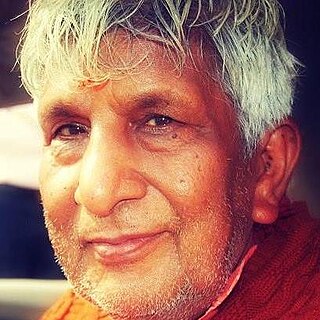
Govind Prasad Kukreti, popularly known as Dabral Baba, was an Indian yogi and a disciple of Vikrant Bhairav and Mahavatar Babaji. He was also known as Baba and Shri Dabral Baba.
Kinnar Akhara is an akhara established in 2018 by the hijra community. It is under the Juna Akhada. The organization showcased itself at the 2019 Kumbh Mela. The organization promotes discussion of Hinduism and LGBT topics.

Mahant Narendra Giri was an Indian Hindu leader from Allahabad, Uttar Pradesh. He served as the President of Akhil Bharatiya Akhara Parishad, the largest organized body of Hindu seers and ascetics in India, for two consecutive terms from 2014 until his death. Giri was the head of Baghambari Math, a more than 400-year-old Hindu monastery, since 2004. He was the chief priest (Mahant) of Allahabad's Bada Hanuman Temple, one of India's most-visited temples, which is also administered by Baghambari Math. Giri died by suicide at his residence in Prayagraj on 20 September 2021. His death case is being investigated by the CBI.
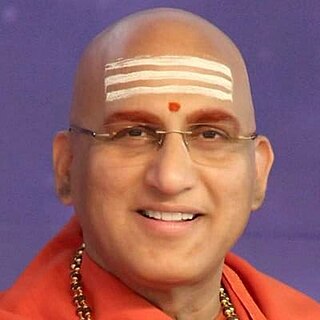
Swami Avdheshanand Giri is an Indian Hindu spiritual guru, writer and philosopher and one of the best personality of India. He is the current Acharya Mahamandaleshwar of Juna Akhara. Juna Akhara is the largest Akhara for Naga Sadhus in India. Giri has initiated about one million Naga sadhus. His Ashram is situated at Kankhal, Haridwar. He is the president of Hindu Dharm Acharya Sabha and also a board member of the World Council of Religious Leaders.
References
- 1 2 3 McCue, Dan; Baba Says Promoter Stiffed Him for $250,000, Courthouse News Service, October 5, 2011.
- ↑ "About Baba Rampuri". May 11, 2010.
- 1 2 Rampuri.com
- ↑ Oroc, James; Tryptamine Palace: 5-MeO-DMT and the Sonoran Desert Toad, page 230
- 1 2 "Once Beverly Hills resident in 'bliss' at Kumbh Mela". Hindustan Times. January 22, 2007. Archived from the original on June 10, 2014. Retrieved June 5, 2013.
- ↑ Pandey, Prashant (January 14, 2013). "This Naga sadhu is a tech-friendly American". Indian Express . Archived from the original on April 3, 2016.
- 1 2 3 The foreign Hindu monks at India's Kumbh Mela
- ↑ Rampuri, 'Autobiography of a Sadhu: A Journey into Mystic India' (2010)
- ↑ "Foreign Naga Baba proclaimed Shri Mahant, official Rampuri website video". Archived from the original on June 20, 2013. Retrieved June 18, 2013.
- ↑ Official facebook profile
- ↑ Translation: page 94, Rampuri, Autobiography of a Sadhu: A Journey into Mystic India (2010)
- 1 2 "Rampuri v Stern :: January, 2013 :: New York Other Courts Decisions :: New York Case Law :: US Case Law :: US Law :: Justia". Law.justia.com. Retrieved October 21, 2013.
- 1 2 "second review down". Archived from the original on March 10, 2013. Retrieved June 11, 2013.
- ↑ Rampuri, Autobiography of a Sadhu: A Journey into Mystic India (2010), page 1 and 123
- ↑ Rampuri, Autobiography of a Sadhu: A Journey into Mystic India (2010), page 122
- ↑ Rampuri, Autobiography of a Sadhu: A Journey into Mystic India (2010), page 123
- ↑ Rampuri, Autobiography of a Sadhu: A Journey into Mystic India (2010), page 1043
- 1 2 "About - Baba Rampuri". Rampuri.com. May 11, 2010. Retrieved October 21, 2013.
- ↑ Rampuri; ‘Autobiography of a Sadhu: A Journey Into Mystic India’ (2010), pages 132, 134, and 231.
- ↑ "Spiritual Links". Archived from the original on April 11, 2012. Retrieved July 6, 2013.
- ↑ "Antahrashtriya Mandal - Baba Rampuri". Rampuri.com. August 13, 2013. Retrieved October 21, 2013.
- ↑ "World's Biggest Festival: Kumbh Mela - Beverly Hills Baba". National Geographic. Archived from the original on May 14, 2013. Retrieved 1 June 2013.
- ↑ Sen, Rajyasree; 'Chelsea: Dear India' shows Indians are rich and steeped in Bollywood, spirituality, Mint, August 25, 2017.
- ↑ "Eddie Stern Archives - Baba Rampuri". Rampuri.com. August 13, 2013. Archived from the original on October 21, 2013. Retrieved 2013-10-21.
- ↑ Rampuri v Stern 2013 NY Slip Op 50048(U), Justia, January 15, 2013.